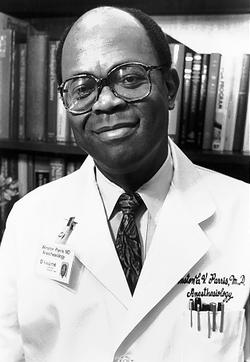
Dr. Winston Parris
Parris aims to ease pain around the world
In the United States there are numerous, sophisticated methods for dealing with patients' pain. The same, however, cannot be said for many other nations in the world.
"There are countries where if you have cancer you get two Demerol and then you simply suffer," said Winston C.V. Parris, professor of Anesthesiology at Vanderbilt University Medical Center.
The World Society of Pain Clinicians (WSPC), a 15-year-old organization with members worldwide, is working to change the way doctors around the world view the treatment of pain.
Parris was recently elected president of the WSPC at their bi-annual meeting in Istanbul, Turkey.
He has two goals for his term, which will run for four years: to increase membership nationally and to disseminate knowledge about pain treatment to countries that have fewer resources.
To increase membership Parris has created five vice-presidents in Africa, Latin America, the Caribbean, America, and the Far East.
A vice-president was not installed in Europe because they are already so well represented, Parris said.
In order to disseminate knowledge about pain treatment Parris has assembled groups of physicians who will meet to talk about ways to treat pain associated with specific diseases. These groups will write small books on how to treat pain associated with these diseases and send them to the countries that have no guides.
"In many places there is nothing to go on, and, with many diseases, there are specific ways of treating pain for the greatest effect," said Parris.
Parris also works at VUMC to preach the gospel of pain so that that aspect of patient care can be part of the curriculum.
"Pain is not well incorporated into a medical student's education. To get a concept of what pain is we have to study it more rigorously," said Parris.
Palliative medicine, which gives temporary relief from the pain of various diseases, is best learned not in the classroom, but in an environment where the pain that is caused by disease can be consistently observed.
"I send my fellows to the hospice nurses because sitting in our offices we do not know what it is that happens to people when they are dying," said Parris.













